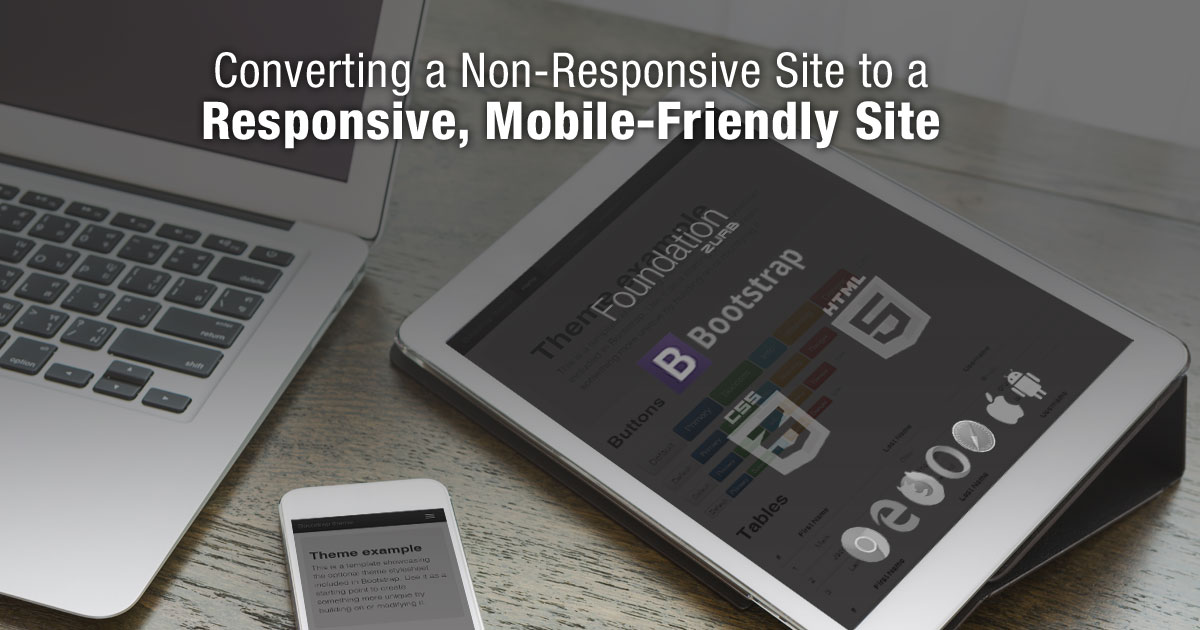Recent studies indicate that the behaviour of web audiences has shifted, with Americans accessing websites through their smartphones 28% more frequently than on desktops. This trend is expected to continue, as the use of mobile devices for browsing the Internet continues to increase.
In response to this trend, it's crucial for businesses to adapt their websites to be mobile-friendly and responsive. With the proliferation of smartphones, tablets, and other mobile devices, it's no longer acceptable to have a website that only displays correctly on a standard browser. By failing to adapt to this trend, businesses risk missing out on a large number of potential customers who browse the Internet using their mobile devices.
A responsive website design that optimizes the display of content across different devices has become a necessity for businesses of all sizes. This type of design allows a website to be viewed optimally, regardless of the device used to access it. By embracing responsive design, businesses can provide a seamless user experience that enhances engagement and increases conversion rates.
Moreover, search engines like Google prioritize mobile-friendly websites in their search results, which means that businesses with responsive designs are more likely to appear at the top of search engine results pages. This increases visibility, drives more traffic, and ultimately leads to increased revenue.

Converting to a Responsive Site Design
The good news is that most websites can be easily converted from non-responsive to responsive – but not all can. It depends on where and how your priority information is displayed. Some current designs cannot be directly converted to a one-size-fits-all, mobile-friendly design. But that’s okay, we’ll help you get started.
# Determine Your Design Requirements
Redesigning a website can be a daunting task, but it's crucial for businesses to adapt to changing user behaviours and stay relevant in a rapidly evolving digital landscape. The first step in any redesign project is to rethink your priority information and determine clear and concise design requirements. This involves taking a step back and evaluating the purpose and goals of your website, as well as the needs and preferences of your target audience.
One important consideration in modern website design is mobile compatibility. With more and more people accessing the Internet through their mobile devices, it's essential to ensure that your website is optimized for mobile browsing. This means taking a close look at mobile browsers and checking on their universally compatible components, such as screen size, resolution, and operating system.
Based on this analysis, you can decide whether you should manually convert your website to be mobile-friendly or use a framework that simplifies the process. Manual conversion involves optimizing your website's layout, content, and images to display correctly on mobile devices, while a framework provides pre-built templates and tools that can be customized to fit your website's specific needs.
When choosing a framework, it's essential to consider factors such as ease of use, compatibility with your website's existing technology stack, and support for mobile responsiveness. Some popular frameworks for mobile-friendly website design include Bootstrap, Foundation, and Materialize.
# Monitor and Optimize Performance
Monitoring and optimizing performance is a critical step in ensuring the success of a responsive website. It involves regularly analyzing website traffic and user behaviour, identifying areas for improvement, and making necessary changes to increase engagement and conversion rates.
User testing can provide valuable feedback on a website's usability and design, helping to identify any areas where users are having difficulty navigating or finding information. Speed optimization can improve user experience and reduce bounce rates by reducing the file size of images, compressing code, and enabling caching.
Mobile optimization is essential to ensure that a website is optimized for mobile devices. Testing the website on various devices and browsers can help identify any issues with responsiveness, usability, or design on mobile devices. Continuous content optimization, including updating and refreshing pages, adding new content, and improving calls to action, can increase engagement and conversion rates. A/B testing can be used to test different versions of website pages or features to determine which ones perform better. This can help identify the most effective design and content elements to improve user engagement and conversion rates.
Ensure Accessibility and Usability
Ensuring accessibility and usability is a crucial aspect of creating a responsive website. With the rise of mobile devices, it's essential to ensure that the website is easily accessible and usable on all devices, including smartphones, tablets, and desktop computers.
One important consideration is the website's content. Content must be presented in a way that is easy to read and digest, with clear headings and subheadings, bullet points, and relevant images. The website's content should also be optimized for search engines, with keywords and phrases that users are likely to search for.
Additionally, the website's functionality must be optimized for all devices. This includes ensuring that all features and functionality work properly on all devices, with no errors or broken links. The website should also be optimized for speed, with fast loading times to improve user experience and reduce bounce rates.
# Prioritize Mobile-first Design
To prioritize mobile-first design, businesses should focus on designing their website for mobile devices first, then scaling up to larger screen sizes. This involves designing the website with a mobile-first mindset, with a focus on delivering an optimized experience for smaller screens. This can include using larger fonts and buttons, simplifying the navigation menu, and prioritizing the most important information.
Another important consideration is the website's loading time on mobile devices. Mobile users are often on the go and have less patience for slow-loading websites. Optimizing the website for speed on mobile devices can help improve user experience and reduce bounce rates.
Bootstrap and Foundation
When it comes to mobile website conversion, two of the most popular frameworks are Bootstrap and Foundation. While both frameworks have similar goals, they have some distinct differences that set them apart.
# Similarities
- Grid System: Both Bootstrap and Foundation offer a grid system that enables developers to create responsive layouts and adjust the design for different screen sizes.
- Pre-Built Components: Both frameworks come with pre-built UI components such as navigation menus, buttons, forms, and more that can be customized to fit the website's requirements.
- Open-Source: Both Bootstrap and Foundation are open-source and have large communities of users and developers who contribute to the development and support of the frameworks.
- Web Technologies: Both frameworks are built with web technologies such as HTML, CSS, and JavaScript, which makes it easier for developers to integrate them into existing web projects.
# Differences
- Design Philosophy: Bootstrap was designed with a desktop-first approach, while Foundation prioritizes mobile-first design. This means that Bootstrap's design is optimized for larger screens and desktops, while Foundation's design is optimized for smaller screens and mobile devices.
- Customization: While both frameworks provide pre-built components, Foundation offers more flexibility and customization options than Bootstrap. Developers can easily customize Foundation's UI components to fit their website's design requirements.
- JavaScript Library: Bootstrap uses jQuery as its primary JavaScript library, while Foundation uses a custom JavaScript library called Zepto. Zepto is smaller than jQuery and provides similar functionality.
- Device Support: Bootstrap offers more extensive mobile browser support than Foundation, while Foundation offers broader device support. This means that Bootstrap is better optimized for mobile web browsers, while Foundation is better suited for a wider range of devices.
When choosing between Bootstrap and Foundation, it's important to consider the specific needs and goals of your website. Bootstrap may be a better choice if you require extensive mobile browser support and pre-built components, while Foundation may be a better choice if you prioritize customization, flexibility, and mobile-first design.
Conclusion
Converting a non-responsive site to a responsive, mobile-friendly site is essential in today's digital landscape. With the majority of users accessing websites on their mobile devices, having a site that is optimized for mobile is crucial for user experience and engagement.
To convert a non-responsive site to a responsive site, it is important to prioritize mobile-first design, rethink priority information, choose the right framework, and ensure accessibility and usability. Once a responsive website is live, it is important to monitor and optimize its performance regularly to ensure that it continues to meet user needs and expectations.
Overall, the process of converting a non-responsive site to a responsive site can be challenging, but it is essential to remain competitive and provide the best user experience possible. By following best practices and using the right tools and frameworks, businesses can create a mobile-friendly website that attracts and retains users.
Call us at 484-892-5713 or Contact Us today to know more details about converting a non-Responsive site to a responsive, Mobile-Friendly site.


